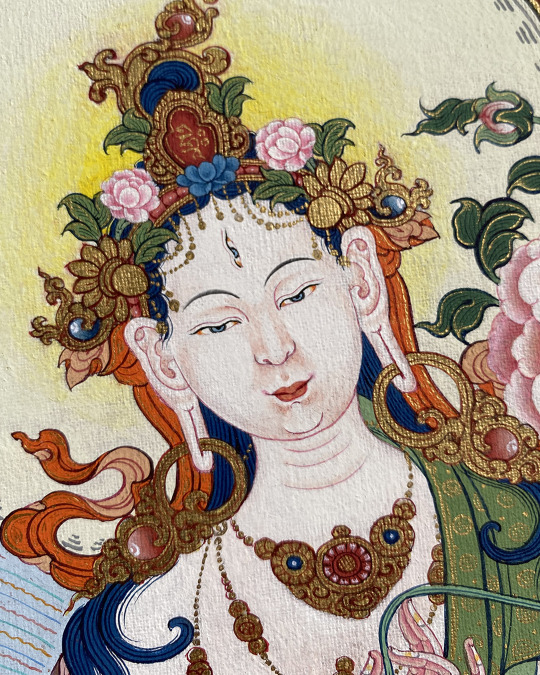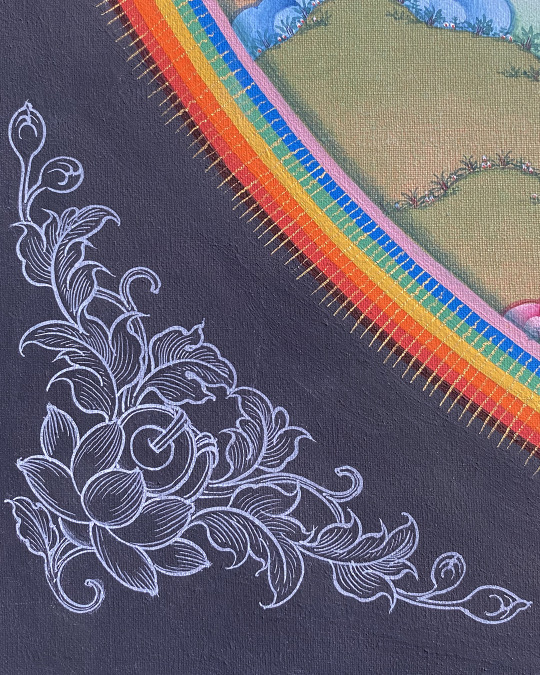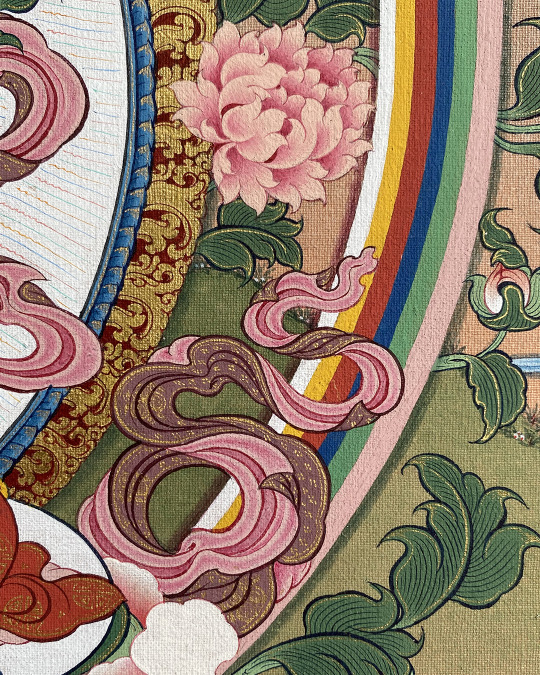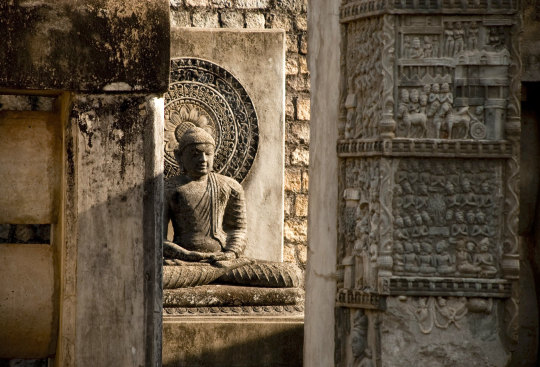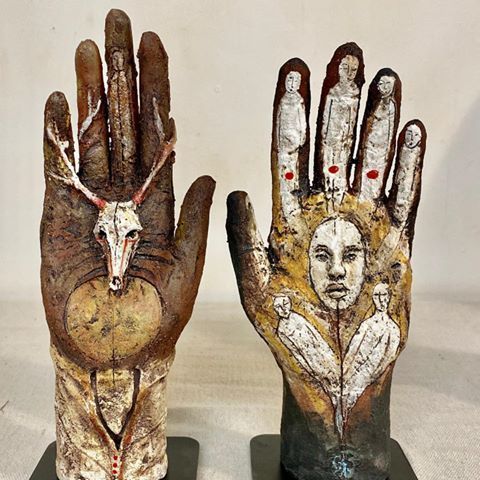Text
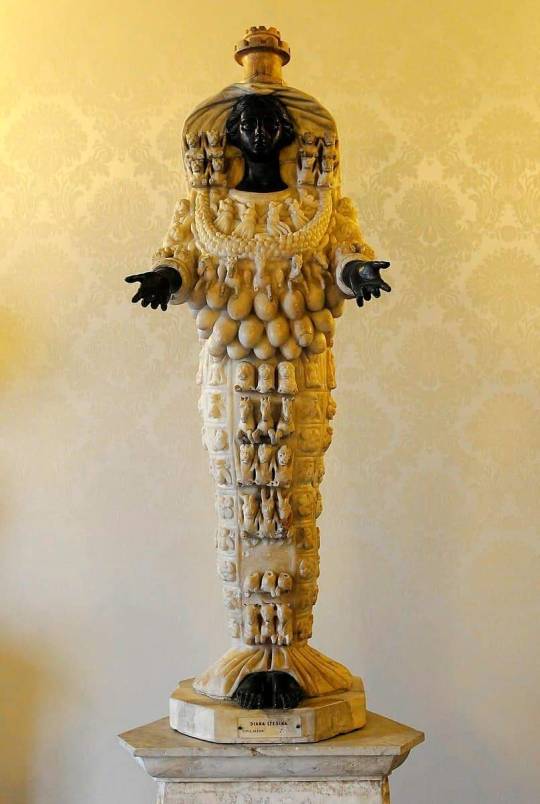
From the Greek point of view Ephesian Artemis is a distinctive form of their goddess Artemis. In Greek cult and myth, Artemis is the twin of Apollo, a virgin huntress who supplanted the Titan Selene as goddess of the Moon. At Ephesus, a goddess whom the Greeks associated with Artemis was venerated in an archaic, certainly pre-Hellenic cult image that was carved of wood and kept decorated with jewelry. Robert Fleischer identified as decorations of the primitive xoanon the changeable features that since Minucius Felix and Jerome's Christian attacks on pagan popular religion had been read as many breasts or "eggs" — denoting her fertility (others interpret the objects to represent the testicles of sacrificed bulls that would have been strung on the image, with similar meaning). Most similar to Near-Eastern and Egyptian deities, and least similar to Greek ones, her body and legs are enclosed within a tapering pillar-like term, from which her feet protrude. On the coins minted at Ephesus, the apparently many-breasted goddess wears a mural crown (like a city's walls), an attribute of Cybele (see polos). On the coins she rests either arm on a staff formed of entwined serpents or of a stack of ouroboroi, the eternal serpent with its tail in its mouth. Something the Lady of Ephesus had in common with Cybele was that each was served by temple slave-women, or hierodules (hiero "holy", doule "female slave"), under the direction of a priestess who inherited her role, attended by a college of eunuch priests called "Megabyzoi" and also by young virgins (korai).
The "eggs" or "breasts" of the Lady of Ephesus, it now appears, must be the iconographic descendants of the amber gourd-shaped drops, elliptical in cross-section and drilled for hanging, that were rediscovered in the excavations of 1987-88; they remained in situ where the ancient wooden cult figure of the Lady of Ephesus had been caught by an eighth-century flood (see History below). This form of breast-jewelry, then, had already been developed by the Geometric Period. A hypothesis offered by Gerard Seiterle, that the objects in Classical representations represented bulls' scrotal sacs cannot be maintained.
A votive inscription mentioned by Florence Mary Bennett, which dates probably from about the third century BC, associates Ephesian Artemis with Crete: "To the Healer of diseases, to Apollo, Giver of Light to mortals, Eutyches has set up in votive offering [a statue of] the Cretan Lady of Ephesus, the Light-Bearer."
The Greek habits of syncretism assimilated all foreign gods under some form of the Olympian pantheon familiar to them— in interpretatio graeca— and it is clear that at Ephesus, the identification with Artemis that the Ionian settlers made of the "Lady of Ephesus" was slender. The Christian approach was at variance with the tolerant syncretistic approach of pagans to gods who were not theirs. A Christian inscription at Ephesus suggests why so little remains at the site:
"Destroying the delusive image of the demon Artemis, Demeas has erected this symbol of Truth, the God that drives away idols, and the Cross of priests, deathless and victorious sign of Christ."
The Lady of Ephesus, 1st century AD (Ephesus Archaeological Museum)
The assertion that the Ephesians thought that their cult image had fallen from the sky, though it was a familiar origin-myth at other sites, is only known at Ephesus from Acts 19:35:
"What man is there that knoweth not how that the city of the Ephesians is a worshipper of the great goddess Diana, and of the [image] which fell down from Jupiter?"
Lynn LiDonnici observes that modern scholars are likely to be more concerned with origins of the Lady of Ephesus and her iconology than her adherents were at any point in time, and are prone to creating a synthetic account of the Lady of Ephesus by drawing together documentation that ranges over more than a millennium in its origins, creating a falsified, unitary picture, as of an unchanging icon.
63 notes
·
View notes
Photo

This beautiful ceiling of Shah Mosque, Esfahan in Iran.
906 notes
·
View notes
Photo
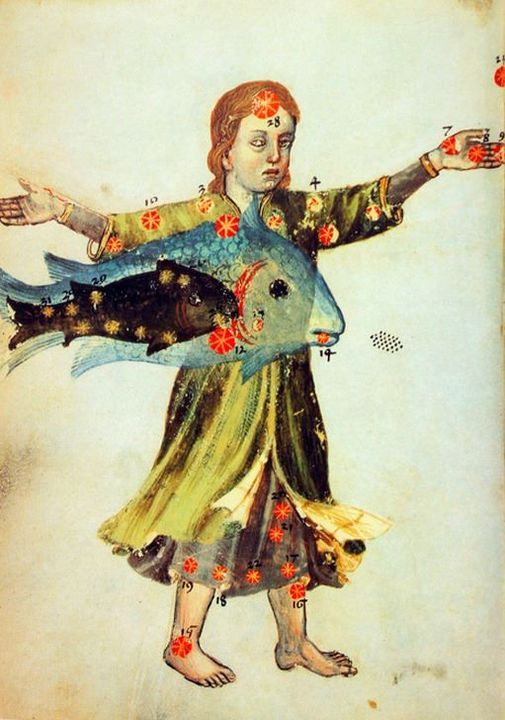
The Book of Fixed Stars (Arabic- كتاب صور الكواكب kitab suwar al-kawakib) is an astronomical text written by Abd al-Rahman al-Sufi (Azophi) around 964.
76 notes
·
View notes
Photo
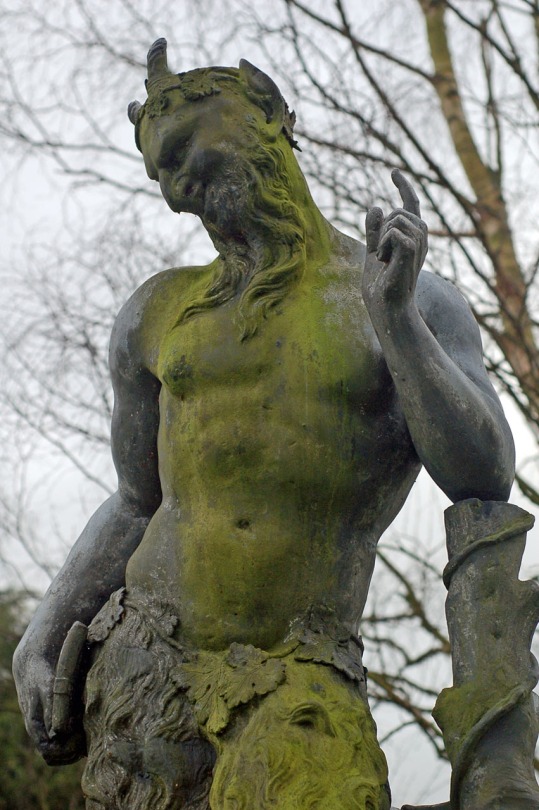
Pan statue on the grounds of Chatsworth House, in North Derbyshire, England.
12K notes
·
View notes
Photo




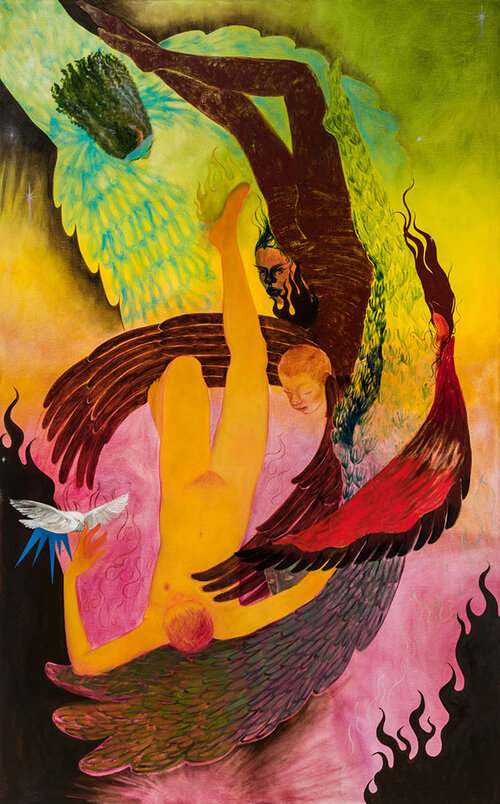
I am with you until the end of time, Naudline Pierre
19K notes
·
View notes
Photo
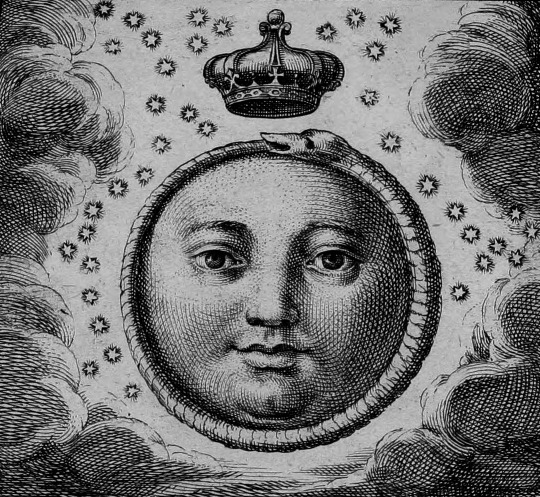
Carlo d'Aquino - Sacra exequialia in funere Jacobi II magnae Britanniae regis (detail), 1702.
2K notes
·
View notes
Photo
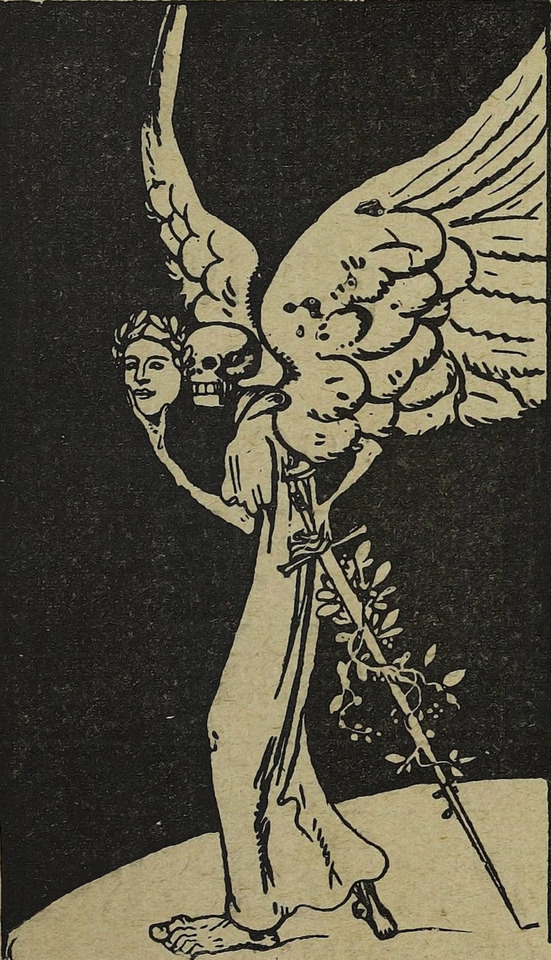
Death disguised as the angel of peace. From Le Rire, 1905.
If you like vintage grim reapers, my collection might offer a scythe of relief.
The most intriguing vintage masks I’ve encountered are here.
Shiver in wonderment: Weblog ◆ Books ◆ Videos ◆ Music ◆ Etsy
3K notes
·
View notes
Photo
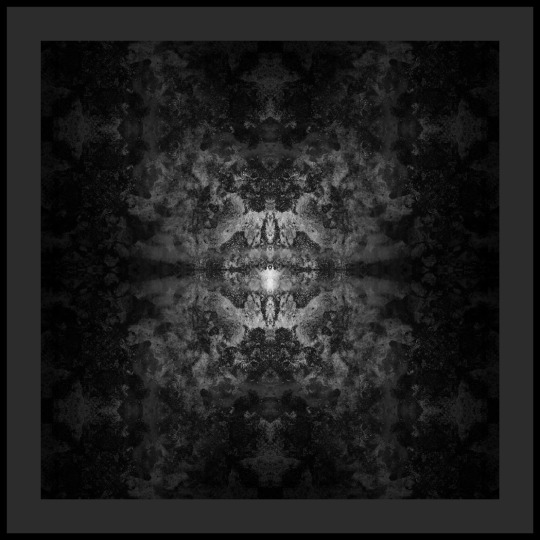
At first it vaguely came to me in an intense vision. It was in black and white, I saw what resembled a liquid brain shaped morphing cloudy energy. Two hemispheres splitting open and revealing a mutating form of bright light inside.
The most suitable photo came to mind, so I loaded it up in Photoshop and after many joyful shenanigans this showed up.
Around the same time I recorded and mixed a certain harmony of frequencies called The Ace Of Chalices, thus the title for both as they are one and the same, expressed in different dimensions.
You may want to turn up the volume a bit as I did not employ an atrocious amount of compression.
I recommend looking at the artwork for a while and then closing your eyes and meditating with headphones whilst you let it play with you.
https://slonaut.bandcamp.com/track/the-ace-of-chalices
- Slonaut
179 notes
·
View notes
Photo
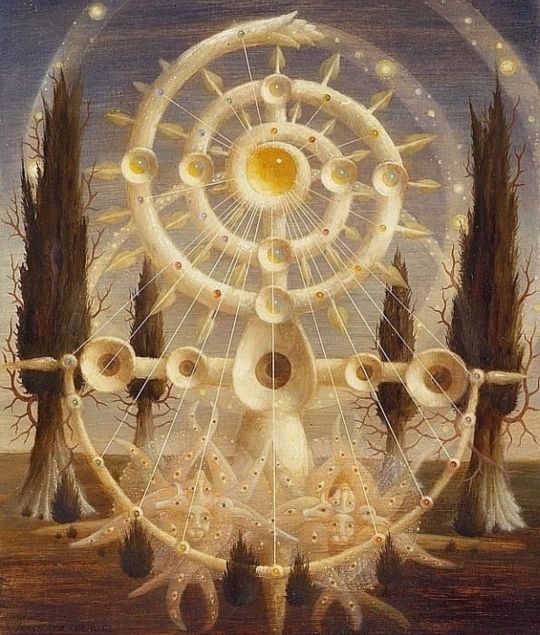
Ernst Steiner — Lebensbaum (Tree of Life) [oil and tempera on hardboard, 1982]
5K notes
·
View notes
Photo
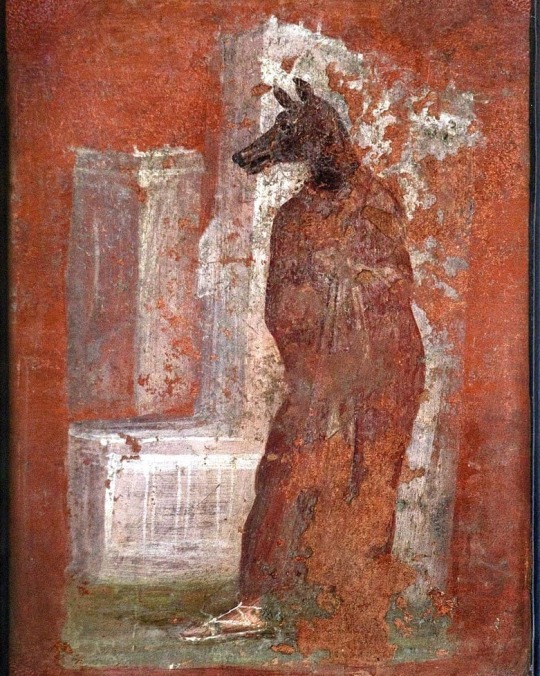
Priest wearing the mask of Anubis; fresco, Temple of Isis, #Pompeii, Villa dei Misteri ~ II BC
https://www.instagram.com/p/CB8JJK2l_h7/?igshid=lqo8qf6wqok4
227 notes
·
View notes
Photo
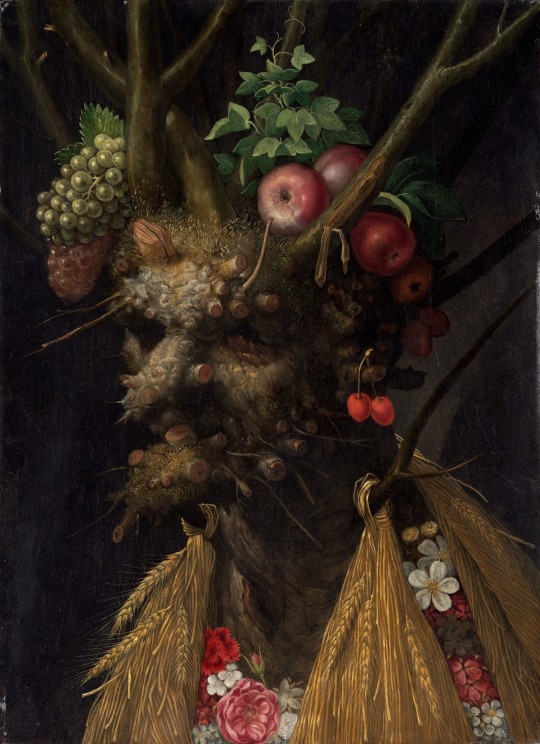
Giuseppe Arcimboldo, Four Seasons in One Head, 1590. Oil on panel, 60.4 x 44.7 cm. National Gallery of Art, Washington, D.C.
4 notes
·
View notes




